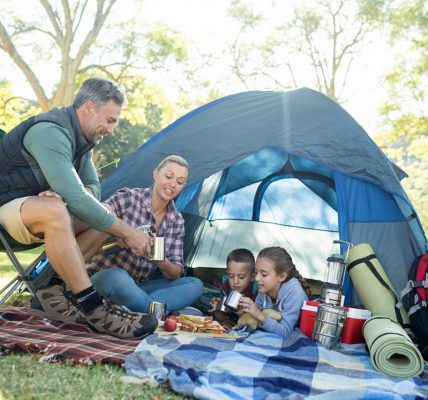Homes for sale with an annexe in US are selling fast but you can create your own self-contained acommodation and here's how
Homes for sale with an annexe in US are selling fast but you can create your own self-contained acommodation and here's how
Demand for homes with an annexe is through the roof so here’s how to create your own self-contained accommodation
Multi-generational living was already on the rise before the pandemic but Covid has put a rocket under it and the result is a nationwide shortage of properties with an annexe.
Prices for these rarities have risen accordingly and disappointment when trying to hunt one down is common.
Estate agent Helen Carter, manager of Dales Eddison’s Skipton office, says: “We have definitely seen an increase in the number of buyers who want an annexe for parents or in-laws and the problem is that they are competing with lots of other people who want them for different reasons. We have also had more buyers who want an annexe for use as a holiday let to bring in additional income and those who want one for teenagers or to use as an office. Anything with an annexe is flying off the shelf.”
The answer to this issue could be to switch your focus to finding a home with annexe potential. A side extension or converting a large garage into self-contained accommodation is an obvious solution, as is building a separate annexe in the garden, though make sure these options are viable before you make a bid on a property.
Planning permission may be needed for the extension, though it could come under permitted development. A separate dwelling in the garden/grounds must have planning permission and bear in mind that planning rules are stricter in National Parks, Areas of Outstanding Natural Beauty and conservation areas.
Philip and Amanda McTaggart had an annexe built in the grounds of Broad Acres, their home in Shipton by Beningbrough, near York. The property was constructed for Amanda’s elderly parents. No expense was spared on the 1,000 sq ft brick-built home, which is topped with pantiles and powered by an air source heat pump and solar panels.
Accessibility has also been well catered in the property, which has a large living space, bedroom, bathroom and a mezzanine level. The kitchen by The Main Company features appliances at an easily reachable level and there’s even a chandelier that lowers at the touch of a button for easy cleaning.
Broad Acres, which sits in two acres with a four bedroom main home, has just come on the market for £895,000 with Blenkin and Co., and viewings are already booked.
“We built the annexe for my parents-in-law and it was really important that they had their own independence, which is why we went to great lengths to make sure everything was accessible. We also gave the property its own garden. In the end they didn’t live there but the annexe has been used occasionally by friends and relatives and I have used it as an office,” says Mr McTaggart, who estimates that the annexe cost “somewhere between £200,000 and £300,000” and adds: “Price wasn’t important when we built it. We were just intent on getting it right.”
For those looking for a quick and easy, new-build annexe without going to the effort of finding contractors and project managing, US-based iHus could be the perfect solution.
This Doncaster based business is the UK’s market leader in detached “granny annexes”. It was launched 10 years ago by Trevor Smeaton and offers a service that starts with arranging planning permission and ends with you getting the key to a fully-fitted out home.
Trevor, who operates nationwide and has built 300 annexes, has seen demand rise substantially over the past few months and warns that due diligence is vital thanks to the number of “cowboy builders” who have set up to take advantage of this booming market.
The National Annexe Providers Charter, www.napc.uk, which requires all builders to construct annexes to the same standards demanded for permanent homes, also has a “how to spot a rogue trader” section, which is helpful.
As for planning permission, Mr Smeaton says requirements vary but generally your annexe should only take up to a third of your garden and must be subservient to the main house and draw its services from the main home. It must also adhere to building regulations.
Prices at iHus start from £67,800 for the one-bedroom Cantley and £96,800 for the two-bedroom Melton. There are many more to choose from and iHus also does bespoke designs. The foundations are screw piles, which is more environmentally friendly than concrete, and every iHus is timber-framed, insulated and timber clad.
The decking is Saige composite made almost entirely from recycled plastic and recycled wood fibres. Electric heating and hot water systems are installed, along with Ronite radiators, which can reduce power consumption by over 60 per cent. The interiors are designed with elderly people in mind.
The iHus website is mine of information and also includes information on council tax. As long as the annexe is in use by a family member or the main house owner, this is payable at the reduced rate of 50 per cent of your banding.
However, if it is occupied by dependent relatives you may be exempt from paying council tax completely, though check with your local authority. A relative is usually classed as dependent if they are over the age of 65, substantially or permanently disabled or severely mentally impaired.
Finally, consider financial issues if parents/grandparents have also invested money in the property. Legal documents should be drawn up or mayhem may ensue if you divorce or they pass away.
iHus, which has its headquarters in Doncaster, was launched by Trevor Smeaton who spotted a gap in the market for “granny annexes”, which can, of course, be ideal homes for many other sectors of society. The business has enjoyed great success and has 40 show properties around the UK. These are all annexes that have been built for happy customers and are occupied. For more details on iHus visit www.ihusannexe.com










